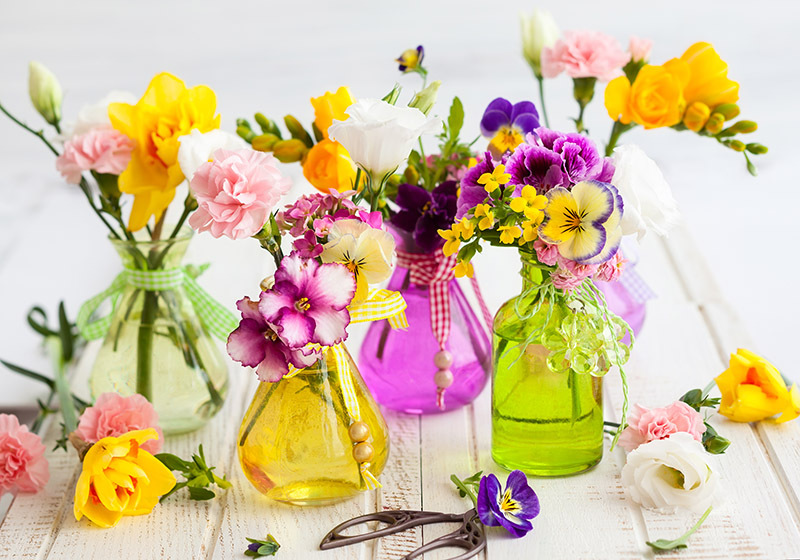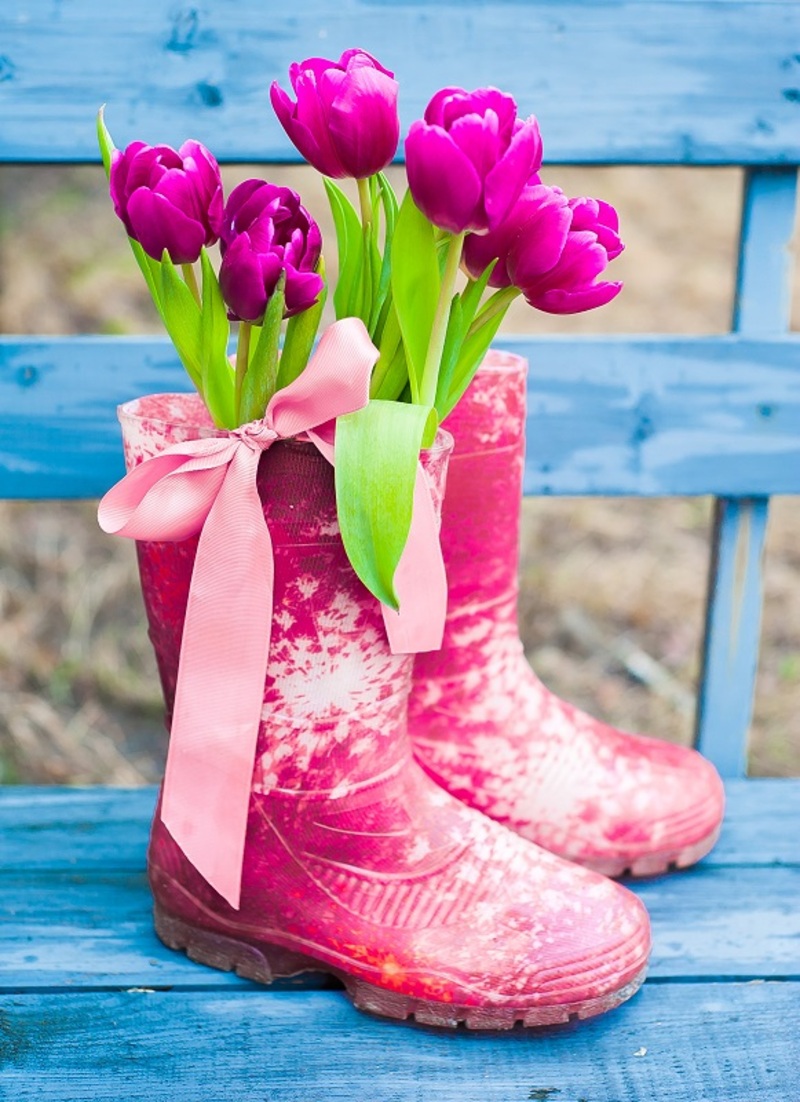Proven Strategies for Long-Lasting Hydrangea Beauty
Posted on 18/08/2025
Proven Strategies for Long-Lasting Hydrangea Beauty
Hydrangeas are renowned for their lush blooms and vibrant displays, making them a beloved choice for gardeners everywhere. Yet, maintaining long-lasting hydrangea beauty can present challenges without proper knowledge and care. In this comprehensive guide, you'll discover science-backed solutions and expert advice to keep your hydrangeas thriving and beautiful all season long.

Understanding Hydrangeas: A Foundation for Lasting Beauty
Before diving into advanced care techniques, it's important to understand the different hydrangea varieties and their unique needs. Hydrangeas come in several popular types, including:
- Bigleaf (Hydrangea macrophylla): Known for their large, rounded clusters of pink, blue, or purple flowers.
- Panicle (Hydrangea paniculata): Characterized by cone-shaped, creamy-white to pink blooms.
- Smooth (Hydrangea arborescens): Features round, fluffy white or greenish flowers, such as the 'Annabelle' variety.
- Oakleaf (Hydrangea quercifolia): Noted for their unique foliage resembling oak leaves and elongated flower clusters.
- Climbing hydrangea (Hydrangea petiolaris): A vigorous vine with fragrant, lacy-flowered clusters.
Each type brings unique beauty to the garden but thrives best when their distinct preferences are met. The key to hydrangea longevity is tailoring your care regimen to your specific variety.
Choosing the Right Location for Lasting Hydrangea Beauty
Optimal Sun Exposure
Most hydrangeas prefer a balance of sunlight and shade. Bigleaf and mountain hydrangeas thrive in morning sun and afternoon shade. In contrast, panicle hydrangeas can tolerate more direct sunlight. Avoid full, harsh afternoon sun, which can scorch leaves and shorten the bloom period.
Soil Essentials for Vibrant Blooms
- Well-draining Soil: Hydrangeas dislike "wet feet." Ensure soil drains well to prevent root rot.
- Rich, Organic Matter: Amend soil with compost or well-rotted manure for optimal health and stunning flowers.
- pH Matters: The soil's pH can influence bloom color, especially in bigleaf hydrangeas - acidic soils yield blue hues, while alkaline soils promote pink shades.
Tip: Use a soil test kit to determine current conditions and amend as needed for enduring hydrangea beauty!
Watering Techniques for Healthy and Long-lived Hydrangeas
Consistency is Key
Hydrangeas need consistent moisture for long-lasting vitality and beauty. Irregular watering leads to wilted flowers and stressed plants.
- Deep Watering: Water deeply two to three times a week rather than daily, ensuring moisture reaches the root zone.
- Morning Routine: Water in the early morning to reduce evaporation and discourage fungal diseases.
- Mulch Matters: Apply 2-3 inches of organic mulch (like shredded bark or compost) to help retain soil moisture, regulate temperature, and suppress weeds.
Signs of Proper Hydration
- Glossy, firm leaves
- Upright growth without wilt or droop
- Consistently plump flower clusters
Pro Tip: Avoid overhead watering. Instead, use a soaker hose or drip system to keep foliage dry and roots well hydrated.
Feeding Your Hydrangeas for Lasting Beauty
Choose the Right Fertilizer
Fertilization is crucial for vivid, long-lasting hydrangea blooms. Selecting a balanced, slow-release fertilizer ensures steady nutrition.
- Early Spring: Apply a granular slow-release fertilizer high in phosphorus to encourage blooming.
- Mid-Season: Repeat with a second, lighter feeding to sustain growth.
Note: Avoid high-nitrogen fertilizers, which prioritize foliage growth over flowers.
Organic Alternatives
- Composted chicken manure
- Fish emulsion
- Bone meal (for phosphorus)
Pruning for Perpetual Hydrangea Beauty
Timing is Everything
Proper pruning encourages better air circulation, robust growth, and larger, longer-lasting blooms.
- Bigleaf (macrophylla) and oakleaf hydrangeas: Prune just after flowering, as they bloom on old wood. Removing old or damaged stems encourages new growth.
- Panicle and smooth hydrangeas: Prune in late winter or early spring since they flower on new wood. Cut back stems by one-third for abundant, fresh blooms.
- Climbing hydrangeas: Pruning is rarely needed, but trim to control shape after flowering.
Bonus: Continuously deadhead faded blooms to prolong the display and redirect plant energy into new flower production.
Maximizing Hydrangea Color and Beauty
Manipulating Soil pH for Vibrant Hues
For certain hydrangeas, especially mophead and lacecap types, soil chemistry affects flower color:
- For Blue Blooms: Soil pH should be between 5.0 and 5.5. Amend with aluminum sulfate or organic matter such as pine needles.
- For Pink Blooms: Maintain soil pH at 6.0 to 6.2. Add lime to increase alkalinity.
Tip: Always test soil annually before amending, as overdoing it can lead to nutrient imbalances.
Supporting Large Blooms
- Stake heavily blooming stems to prevent flopping.
- Trim back some flower buds to concentrate energy in fewer, larger blooms--an advanced hydrangea beautification technique.
Pest and Disease Management for Enduring Hydrangea Beauty
Common Threats
- Aphids, spider mites, slugs: Inspect leaves regularly and use insecticidal soap or neem oil as needed.
- Powdery mildew and leaf spot: Water at the soil level and ensure good spacing between plants for airflow.
- Bacterial wilt or root rot: Avoid overwatering and improve soil drainage.
Strong, healthy hydrangeas are more resilient to pests and diseases, ensuring those beautiful blooms last.
Seasonal Hydrangea Care Calendar
Extend the beauty of your hydrangeas year after year with this handy seasonal guide:
- Spring: Prune dead wood, apply mulch, fertilize, and check soil pH.
- Summer: Maintain deep watering, deadhead faded blooms, and monitor for pests.
- Fall: Reduce watering, clean up fallen leaves, and protect roots with a fresh mulch layer.
- Winter: For harsh climates, cover the base with mulch or burlap to prevent root freezing.
Hydrangea Care Myths: Setting the Record Straight
Top Misconceptions
- Pruning always increases blooms: Not true for species that bloom on old wood--incorrect timing can remove next year's flower buds.
- Hydrangeas are strictly shade plants: Many actually benefit from partial sun, especially for optimal flowering.
- All hydrangea colors can be changed:** Only certain varieties (bigleaf) respond to soil pH changes.
Landscaping Ideas for Show-Stopping Hydrangea Displays
- Border Plantings: Add structure and drama by planting hydrangeas in front of evergreens or as a foundation hedge.
- Mixed Beds: Pair different hydrangea types with perennials, such as hostas or ferns, for texture and contrast.
- Specimen Plant: Feature a large, showy hydrangea as the focal point of your front yard or patio.
Pro Tip: Use varieties with staggered bloom times (e.g., panicle and bigleaf hydrangeas) to enjoy an extended season of hydrangea beauty.

Preserving Hydrangea Blooms Indoors
Cut Flower Hydrangea Care
- Harvest blooms early in the day when petals are hydrated.
- Cut stems at a 45-degree angle and remove lower leaves.
- Immediately place stems in cool, clean water with floral preservative.
- For longer vase life, submerge blooms in water for several hours before arranging.
Drying Hydrangeas for Everlasting Arrangements
- Air Drying: Hang stems upside down in a cool, dark place for two to three weeks.
- Silica Gel: Layer blooms in silica gel for five to seven days to preserve color and shape.
Conclusion: Achieve Lush Hydrangea Beauty Year After Year
Achieving long-lasting hydrangea beauty is not just about planting and hoping for the best. It's the result of careful site selection, consistent maintenance, and attentive pest and disease control. By understanding your hydrangea's unique requirements and implementing these proven strategies, you can enjoy vibrant blooms and healthy plants year after year.
Remember: Consistent care yields consistent beauty. From adjusting soil chemistry to mastering the art of pruning and keeping pests at bay, your efforts will pay off with dramatic, show-stopping hydrangea displays that brighten your landscape and delight visitors season after season.
Have your own hydrangea success secrets? Share your experiences and tips in the comments below!
Latest Posts
Proven Strategies for Long-Lasting Hydrangea Beauty
The garden of your soul: find your matching flower
Exploring the cultural ties of red roses to Valentine's
